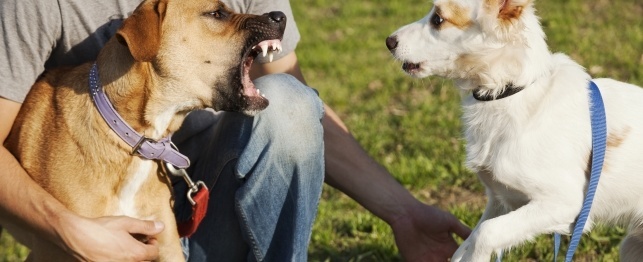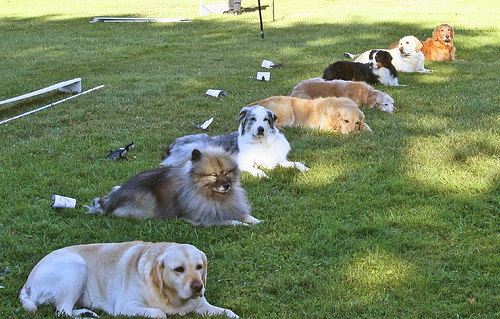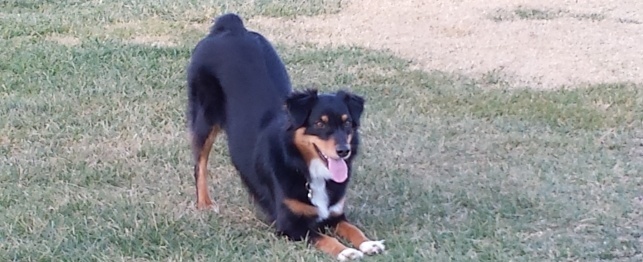If you have found that your dog is starting to show aggressive tendencies, is destructive to your property, or is otherwise misbehaving, you need to take action right away to nip the problem in the bud. Reason: if you let these problems go, your dog will only get the message that this kind of behavior is somehow acceptable, which of course is something you want to avoid at all costs.
Here are 5 quick tips for teaching your dog obedience.
Tip #1: Get your dog 's attention: The first thing you need to do is get your dog to pay attention to what you are saying. If you are going to be training your dog how to behave properly, he or she needs to understand that you are not just messing around. You have something very important to teach and your message needs to be heard. Expert trainers often us the verbal command "Watch Me " to get a dog to pay attention to further training.
Tip #2: Remain in control of your emotions: Your dog likely knows your moods well, and your tone of voice and body language instantly transmit to your dog how you are feeling. This means that you need to pay extra special attention to your own emotional state when training your dog. Your dog needs to be able to distinguish between the act of teaching it something new and that act of your merely unloading your anger on your dog because he or she has done something destructive or aggressive. If your dog acts up, gain control of your temper before you start your lesson and the effects will be much more powerful and lasting.
Tip #3: Give credit where credit is due: When your dog makes some progress during your obedience training - even if it is just a small step in the right direction - be sure to credit your dog with the win. A kind word or an extra doggy biscuit can make all the difference, and expert trainers know that positive reinforcement is more desirable than punishment.
Tip #4: Penalize your dog when she makes a mistake: Of course, positive reinforcement for good behavior or progress in your training program are always welcome. But, when your dog makes mistakes along the way (which will happen), be sure to penalize your dog accordingly. There is no need to resort to hitting or hurting your dog physically. However, a slight tug of the leash or just plain ignoring your dog for a few minutes can provide enough psychological discomfort that your dog will want to start complying with your wishes.
Tip #5: Always follow your words with consequences: Much in the way that parents are advised to teach children proper behavior, when training your disobedient dog you need to make sure that you actually give consequences for disobedience. For example, if you tell your dog not to jump on the couch or chew on a shoe, but you often find yourself too busy to actually stop your dog from the offensive behavior, you are sending a mixed message. Be consistent with what you say and make sure to follow through. Your dog will respect you more for it.
Obedience problems and aggressiveness in a dog are legitimate causes for concern. At the very least, you may find yourself picking up chewed-up newspaper bits or cleaning urine off of your carpet more often than you like. If things worsen, the personal safety and property of those around your dog could be at risk. If your dog is experiencing problems like these, take action right away and bring back the loving, warm companion that you had always intended to have.

 Dog Parks and Bites: What You Need to Know
Dog Parks and Bites: What You Need to Know
Dog Parks and Bites: What You Need to Know
Dog Parks and Bites: What You Need to Know
 Canine Manners 101: Teaching your dog the basics of the 揝tay?Command
Teach Your Dog The "Stay" Command
Teaching your
Canine Manners 101: Teaching your dog the basics of the 揝tay?Command
Teach Your Dog The "Stay" Command
Teaching your
 How to Balance Your Pets Play and Relaxation
How to Balance Your Pets Play and Relaxation
How to Balance Your Pets Play and Relaxation
How to Balance Your Pets Play and Relaxation
 Playing Charades with Your Dog
Playing Charades with Your Dog
Playing Charades with Your Dog
Playing Charades with Your Dog
 MORE Games That Delight Dogs
MORE Games That Delight Dogs
MORE Games That Delight Dogs
MORE Games That Delight Dogs